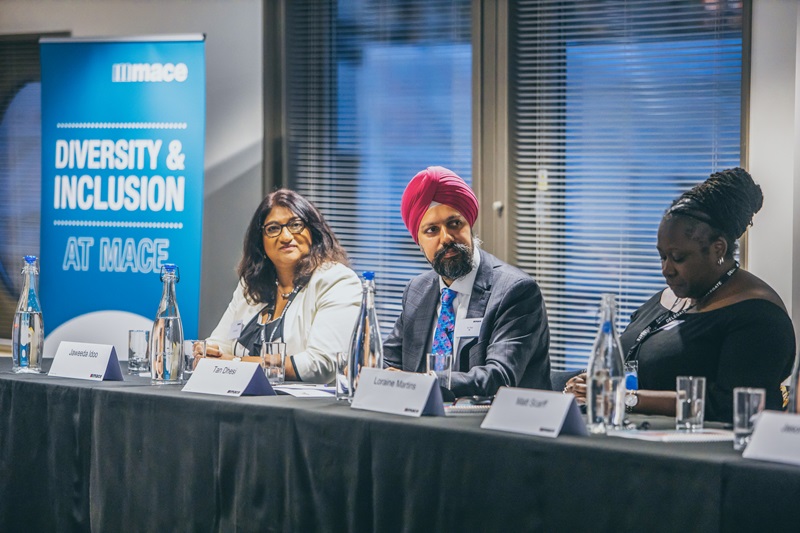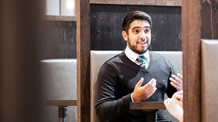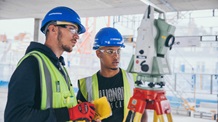Championing our greatest asset – how the built environment can better support diversity and inclusion
Across industries, from education to financial services, an awareness of the value in building a diverse workforce grows every day. Being able to draw on a wide range of experiences and viewpoints helps an organisation to be both more innovative and successful – not to mention making a business a more interesting and inclusive place to work.
And in 2020, McKinsey & Company conducted a survey of 180 companies across Europe and the United States and found that those with the most diverse teams were among the top financial performers. Diversity of age, gender identity and race results in a variety of perspectives and ideas, which can lead project teams faster to the best solution. This is certainly true of our industry and work we deliver on a daily basis.
But the built environment still has a ways to go. In the UK, women make up around 12% of the country’s built environment workforce, with only 1 – 2% of the site-based workforce being female. Only 5-7% of people in UK construction are Black, Asian or from other underrepresented racialised groups, dropping to 1% or fewer among senior industry roles. And less than 3% are part of the LGBTQ+ community. Across the globe, the imbalance is similar.
As an international industry, the built environment must make a conscious effort to reflect these markets and continue our efforts to recruit the brightest individuals across the sector. But how does an industry better support diversity and inclusion? Part of the answer lies in leadership and strategy.
Starting at the top
Diversity and inclusion must begin with senior leadership teams, not least to ensure that people feel like genuine change is taking place. If the Chief Executive says one thing, but the senior leadership across a business do something else, then people will feel that the organisation isn’t ‘walking the walk’.
So as well as ensuring that policies are enforced, board members and senior directors can also play an active role in diversity and inclusion groups to ensure that they are able to make a real impact. That could be anything, from being a sounding board, to attending networking events or marching with the Pride network - but most importantly, it means being a supportive ambassador. An ally of positive change. It means championing the programmes that are already becoming drivers of industry change – initiatives like the Women in Construction Awards – and constantly pushing for progress.
However, a focus on leadership shouldn’t detract from the fact that everyone in an organisation has a responsibility to lead on the agenda, regardless of seniority. But those leaders who prioritise diversity and inclusion understand the individuals in their teams and their ways of working - giving them the best opportunities to succeed.
Implementing a strategy
While much of the industry are now factoring in age, sexual orientation, disabilities and ethnicity when building their teams, it’s those businesses who set real, tangible diversity goals that tend to outperform their peers. That’s because it is impossible to drive change without first establishing what you’re trying to adjust and how you will measure it. But for many organisations, the process of agreeing that strategy is challenging. It requires organisations to come to terms with attitudes and expectations about their current performance on diversity and where they need to get to. This can often be a difficult - but necessary - conversation.
At Mace, we have an Inclusion vision and strategy which sets out what we want to achieve and how we plan to get there. We have rolled out mandatory unconscious bias training across the entire organisation, which started with our board, and we are now tracking our performance against that objective. That can be tough, as it forces people to confront inherent prejudices – but it makes a real impact on behaviour.
Fostering an inclusive culture
We must create space for diverse thoughts to be expressed, respected and considered. Even within an inclusive organisation, people can feel excluded or included because of their team’s sub-culture, which is why inclusivity is all of our responsibility. There isn’t a silver bullet solution – it’s each of us making small incremental and powerful steps each day.
Organisational culture is driven by the values and behaviours of its people. So alongside a strategy for improving diversity, there needs to be a focus on encouraging and rewarding positive behaviours. At Mace we have simplified our behaviours and integrated inclusion as a golden thread through our organisation – we are collaborators, contributors, curious and champions. Giving us a common language, understanding and empowerment to be our whole selves. In 2021 we launched an on-site initiative tackling assumptions and encouraging conversations around respect - shifting behaviours to increase respect personally, respect for others and instilling the confidence to speak out when behaviour isn’t inclusive.
But again, leadership from the top is key here. You can’t change a culture by telling people to behave differently – you need to show that authentic change is taking place, and that means that the board and senior directors need to lead from the front and make that a reality.
Doing things differently
Offering people the platform for open conversation is crucial. Inclusion initiatives and activities can quickly snowball if they’re led by your most determined employees. Highlight diversity leaders in your organisation, make their voice heard or offer them the right opportunities to speak and encourage others to join in. And when it comes to attracting people to the industry, review your hiring practices. Is diversity at the forefront of what you’re communicating to potential employees? Changing demographics comes with a greater concern from candidates about an organisation’s culture of inclusivity, equality and social purpose.
Mace is continuing to grow as an inclusive company and in 2019, we formed the Ethnic, Diversity Inclusion Network and were overwhelmed with the positive reaction and support from senior figures in the business. Almost four years later, the group is now a strong network of support, safety and conversation. EDIN’s key objective is to promote a progressive and inclusive culture within Mace. We are led by a steering committee, and we meet regularly and actively to engage our employees across the country, leaving nobody behind.
The built environment’s greatest asset is its people. We want to reflect the diversity of our international work and global programmes in the diversity of our teams. To make that happen, we must go beyond easy slogans to enable real culture change across companies and organisations. Knowing the value of diversity is the first step in this direction.
Christopher Browne is a member of Mace's EDIN steering committee.












